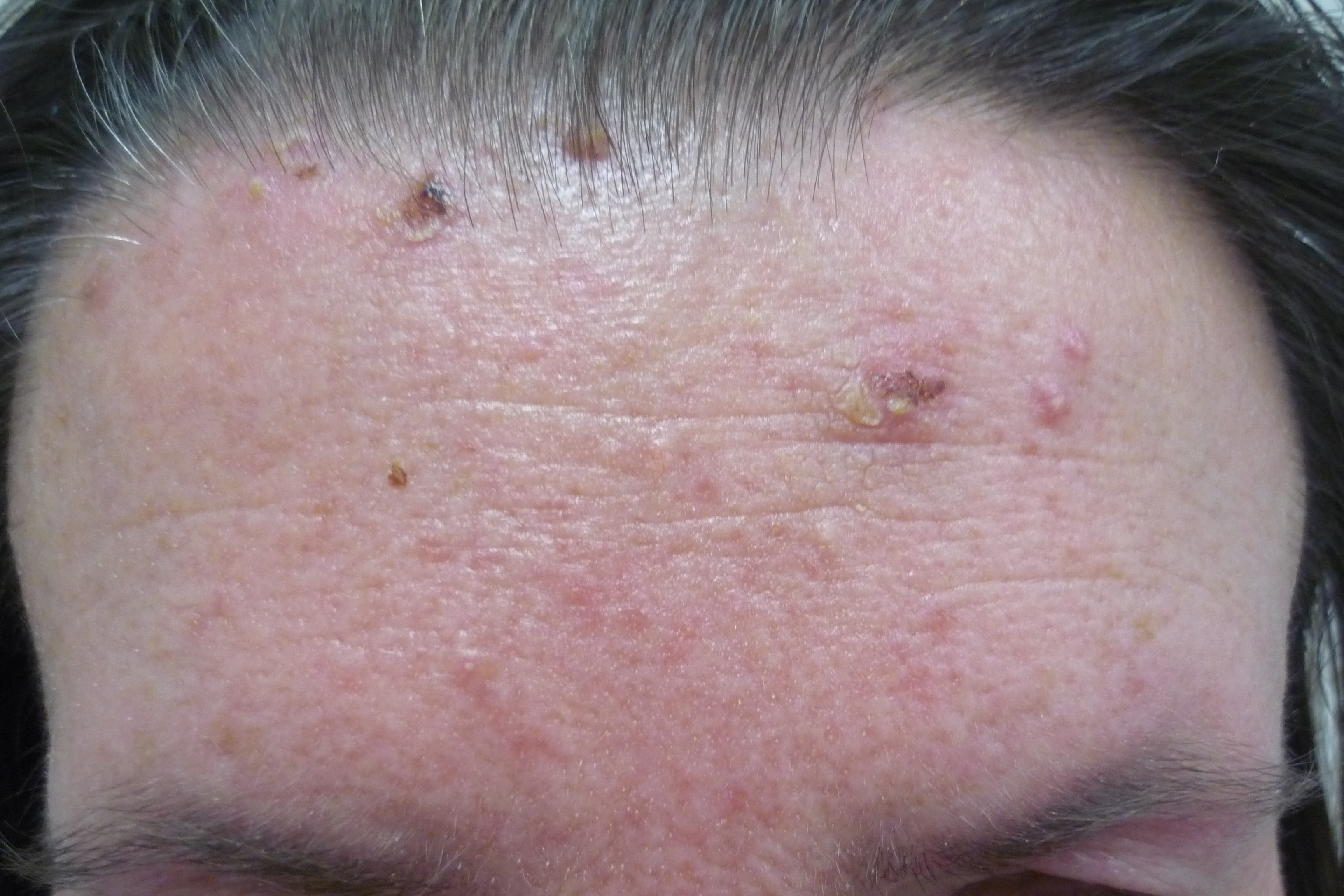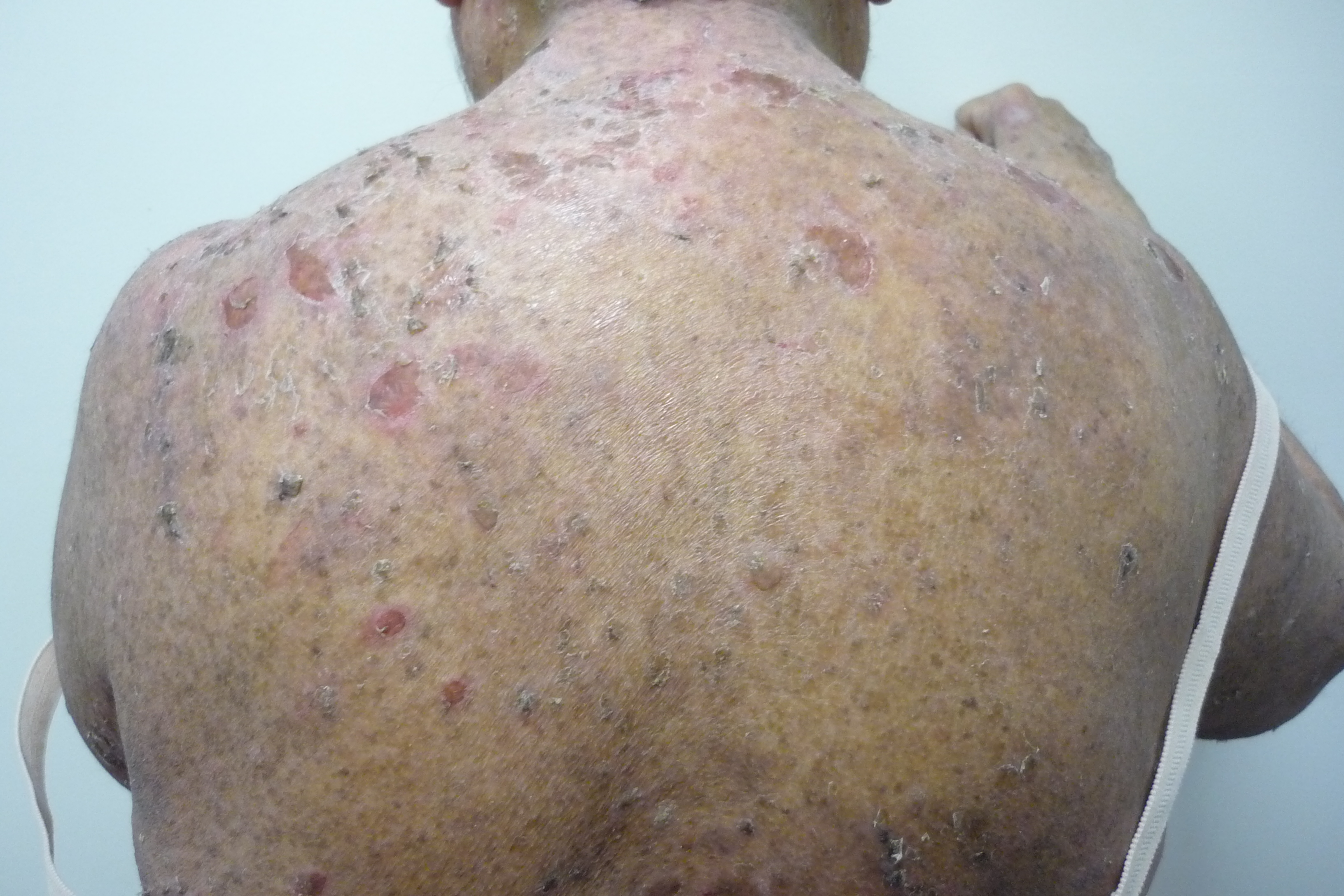What is pemphigus foliaceus?
Pemphigus foliaceus is a rare autoimmune blistering disease which is characterised by superficial blisters, erosions and crusts on the skin. This type of pemphigus is less common than pemphigus vulgaris in Australia but in some parts of the world it is “endemic” and very common.
What causes pemphigus foliaceus?
Pemphigus foliaceus occurs when cells of the body’s immune system produce proteins (autoantibodies) that damage the adhesion points between skin cells. These adhesion points act like press studs holding one of the top layers of the skin cells (epidermis) together. If they are damaged, the skin cells break apart and the top layer peels off. As the top layer is very thin, the blisters may not be noticed, and the skin may appear to be peeling only.
The cause of the immune attack on the skin is not known. Genetic and environmental factors are thought to play a role: some medications containing sulfur groups are thought to be involved; in countries where the condition is endemic in young people, certain parasitic infections and insects are thought to be involved.
Triggers which may initiate pemphigus foliaceus include sunburn, drugs containing thiol, vaccines and radiotherapy.
What does pemphigus foliaceus look like?
Pemphigus foliaceus usually first manifests in adulthood (average 50 to 60 years) but childhood cases can occur.
The condition often first presents with an eruption on the face or scalp which looks red and scaly. This may easily be mistaken for more common problems such as eczema or fungal infections or seborrhoeic dermatitis, but does not respond to treatments for these conditions. It may spread to the body and become painful. The rash may last for many months unrecognised because the blisters are very difficult to see. It may not be until the affected person sees a dermatologist that the diagnosis may be suspected.
Unlike other forms of pemphigus, the mouth and other mucosal sites are not affected in pemphigus foliaceus.
Facial involvement is often the initial sign of pemphigus foliaceus

The scalp is commonly involved.

On the skin, very superficial erosions and desquamation/scaling develop and may become extensive.

What other problems can occur with pemphigus foliaceus?
People with pemphigus foliaceus, together with members of their family, have an increased risk of other autoimmune diseases. The most common of these is autoimmune thyroid disease.
How is pemphigus foliaceus diagnosed?
Skin biopsies are usually required to confirm the diagnosis. Two biopsies will be needed – one biopsy involving the edge of a blister for routine histology in formalin and a second perilesional (normal skin) biopsy which looks for evidence of the abnormal proteins in the skin.
Blood tests may allow identification of the abnormal proteins in the blood.
How is pemphigus foliaceus treated?
The pemphigus group of diseases are rare and treatment regimens have developed over years based on smaller case studies and physician experience rather than large controlled studies.
Some people affected with pemphigus foliaceus may initially require admission to hospital to stabilise their condition.
Rest, reducing stress levels and reviewing medications are important. Any potential triggering drugs should be ceased. Appropriate wound healing dressings are needed and antibiotics are given to prevent infection.
Rituximab 1000mg IV repeated after 2 weeks (after screening for safety)
Oral prednisolone at doses around 1mg/kg/day is generally used as first line therapy to gain control of disease activity until Rituximab works. High doses for prolonged periods can cause side effects which need to be anticipated and managed.
New agents are in clinical trials for pemphigus in Australia and overseas.
What is the likely outcome of pemphigus foliaceus?
Pemphigus is a serious condition, which had a 90% mortality rate before the advent of steroids. Currently the mortality rate is 5-10%, mainly due to infections that may result from the immunosuppression required to control the disease. It is important, therefore, to tailor the regimen to minimise side effects.
Currently there is no cure for pemphigus foliaceus but it can be managed successfully. The aim of treatment is to put the disease into remission so that it has minimal impact on the person’s quality of life.
Further information about pemphigus foliaceus
This information has been written by Professor Dedee Murrell
Last updated: April 2023
Disclaimer
2019 © Australasian College of Dermatologists.
You may use for personal use only. Please refer to our disclaimer.